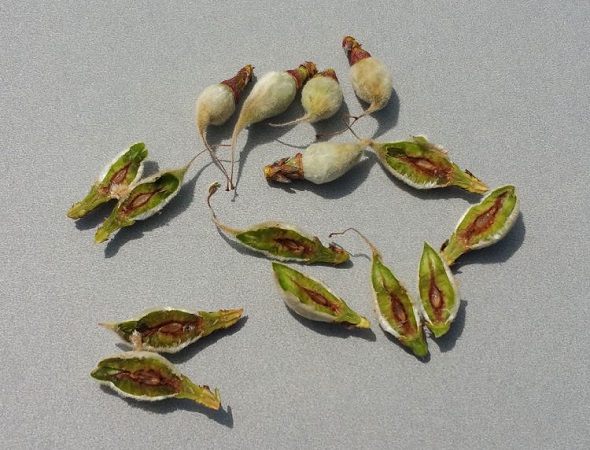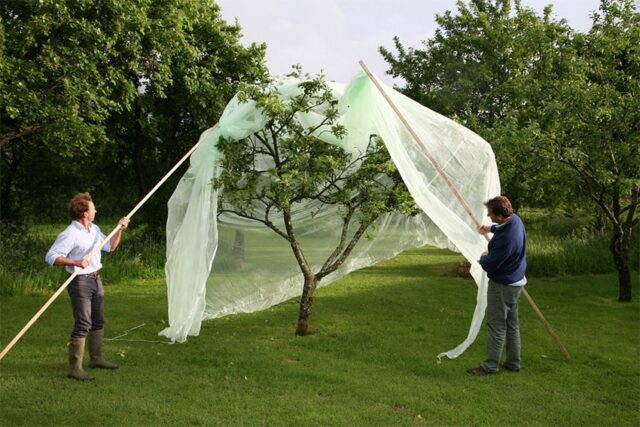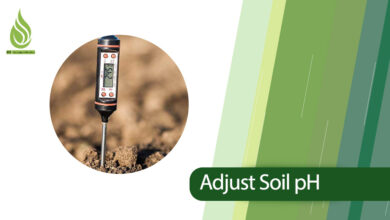
Useful Techniques for Protecting Fruit Trees From Frost Damage
Frost damage to fruit trees is a serious problem for farmers and orchard owners. It can lead to a decrease in the trees’ productivity and cause significant financial losses. In this article, we will introduce effective methods to prevent frost damage to fruit trees. This guide will help farmers protect their trees from cold weather and avoid potential losses.
Frost Damage to Fruit Trees is a Serious Threat to Farmers!
Freezing and frost can be major challenges for orchard owners and farmers in cold regions. Frost occurs when temperatures drop low enough to harm plant cells. This damage can negatively affect the leaves, blossoms, and fruits of the trees. Trees like pears, apricots, and peaches are particularly at risk for frost damage.
Frost damage not only negatively impacts the financial situation of farmers but can also disrupt the fruit supply chain. Therefore, preventing frost and protecting trees from the cold is very important. Understanding prevention methods and how to care for fruit trees helps farmers avoid potential losses.
Reasons for Frost Damage to Trees
To prevent frost damage to trees, it’s important to understand the reasons behind it. Here are some key factors that contribute to frost damage in fruit trees:
- Low Temperatures: A significant drop in temperature, especially on cold nights, can cause trees to freeze. Temperatures below freezing, particularly during critical growth stages like blooming, can be dangerous.
- Low Humidity: Low humidity combined with cold temperatures increases the risk of frost damage.
- Sensitivity of Fruit Trees: Some fruit trees, such as peach and apricot trees, are more sensitive to cold. It’s better to plant trees that are more resistant to frost in colder areas.
- Sensitivity at Different Stages: Trees have varying sensitivities to cold at different growth stages. For example, young flowers and buds are very sensitive to frost.
- Sudden Temperature Changes: Sudden temperature swings, especially in spring and fall, can lead to frost damage. Quick shifts between warm and cold temperatures can seriously harm the trees.
- Nutritional Status: Weak trees that are not well-nourished are more susceptible to frost damage. Proper nutrition and care can help strengthen trees and increase their resistance to cold.

Methods to Prevent Frost Damage to Fruit Trees
In this section, we will discuss several effective methods for preventing frost damage to fruit trees. Keep in mind that preventing frost damage requires ongoing attention and care. By following the methods outlined below, you can help keep your trees healthy and improve their productivity.
Identifying and Choosing Resistant Varieties
Selecting fruit trees that are resistant to cold can help reduce the risk of frost damage. By researching suitable varieties for your area, you can choose trees that are more likely to withstand freezing temperatures.
Choosing the Right Planting Location
The geographic location and environmental features greatly impact the health and productivity of trees. Choosing the right spot to plant fruit trees is crucial for preventing frost damage. Factors like elevation, slope, sunlight, humidity, and climate conditions influence the likelihood of frost affecting the trees. Trees planted in low-elevation areas or on sloped ground are less likely to experience frost. Additionally, planting trees near natural barriers, such as hills or larger trees, can help reduce the impact of cold winds.
These barriers act as windbreaks and prevent cold air from reaching the trees. Selecting locations that receive adequate sunlight during the day can also improve temperatures and reduce the risk of frost. Sunlight warms the soil and the trees, lowering the chances of nighttime freezing. Fruit trees growing in areas with suitable soil moisture tend to be more resilient compared to those in dry regions because moisture helps stabilize temperatures and prevent frost.

Using the Right Fertilizers and Strengthening Trees
Using appropriate fertilizers and boosters is an effective method for preventing frost damage to fruit trees. Fertilizing provides essential nutrients for the trees and strengthens their immune systems. Healthy, strong trees can better resist cold and freezing temperatures. Not fertilizing can lead to poor fruit production or even fruit drop.
The type of fertilizer should be chosen based on the specific needs of the trees and the soil conditions. One of the best fertilizers for preventing frost damage is organic fertilizer. Organic fertilizers (such as compost, animal manure, and decomposed plant materials) not only supply nutrients but also improve soil structure and increase its ability to retain moisture. This can help maintain temperature and moisture levels in the soil during cold seasons.
Typically, organic fertilizers are applied to the soil using a method called Drill-Hole in the winter, allowing nutrients to gradually become available to the trees. This method should be done at the right time and according to the type of tree and its needs.
Using nitrogen fertilizers (like ammonium sulfate) and potassium fertilizers helps strengthen trees, making them more resistant to cold. These fertilizers promote healthier growth and better fruit production. Additionally, providing sufficient rooting fertilizers at the right time ensures that the tree roots can withstand cold and other harmful factors effectively.
Using Protective Covers to Prevent Frost Damage
Using protective covers is an effective way to prevent frost damage to fruit trees. These covers can act as insulation and protect the trees from cold-related harm. Here are some suitable types of covers to help prevent frost:
- Specialized Gardening Fabric Covers: These covers are usually made from thin, breathable fabric that can be placed over trees on cold nights. They help maintain temperature and prevent frost without blocking light and moisture from reaching the trees.
- Plastic Covers: Plastic covers can serve as thermal insulation. However, it’s important to ensure proper ventilation when using plastic covers to avoid trapping too much heat or moisture.
- Thermal Insulation Covers: These covers are typically made from insulating materials (like foam or synthetic fibers) and can effectively maintain temperature. They are especially useful in extremely cold conditions, but they should also allow for ventilation.
- Anti-Frost Tarps: These tarps are used to cover trees on cold nights, helping to keep temperatures at a desirable level.
- Natural Materials: Natural covers like straw, dry leaves, or wood chips can help retain soil moisture and prevent root frost damage.

Proper Irrigation in Winter
Proper irrigation during the winter is a key method for preventing frost damage to fruit trees. Trees that are under water stress are more likely to be affected by frost. Providing adequate moisture can help reduce this stress and improve the trees’ resistance to cold. Using drip irrigation systems can help distribute moisture evenly around the roots and prevent freezing.
Using Advanced Techniques
Advanced agricultural techniques can help farmers effectively prevent frost damage to fruit trees. Here are some modern and efficient methods:
- Heating Fans: Using heating fans to create a flow of warm air around the trees can be effective. This method is especially useful in large commercial orchards.
- Heating Systems: Heating systems, such as boilers or specialized heaters, can raise temperatures in sensitive areas of the orchard. These systems are usually activated during critical times when frost is a risk.
- Windbreaks: Using windbreaks or tall trees as barriers can help reduce wind speed and maintain temperature. These barriers protect the trees from frost damage.

How to Tell If a Tree Has Frost Damage
Early detection of frost damage in fruit trees helps farmers take necessary actions quickly to prevent serious harm. Here are some early signs of frost damage to look for:
- Color Change in Leaves: One of the first signs of frost damage is a change in leaf color. Leaves may turn brown, yellow, or black due to damage to the plant cells.
- Buds and Flowers Drying Out: Frost can cause buds to suddenly die or flowers to turn brown.
- Cracks on the Trunk and Branches: Frost damage can lead to surface cracks on the trunk and branches of the tree. These cracks usually occur due to the rapid contraction and expansion caused by temperature changes.
- Reduced Growth: Trees that have suffered from frost damage typically show less growth.
- Decreased Yield: If fruit trees produce fewer fruits in the years following a frost event, it may be due to previous damage the trees endured.
- Brown or Black Spots: Brown or black spots on leaves and branches are signs of frost damage and indicate harm to the plant tissues.
By recognizing these signs early, farmers can take action to protect their trees and minimize damage.
